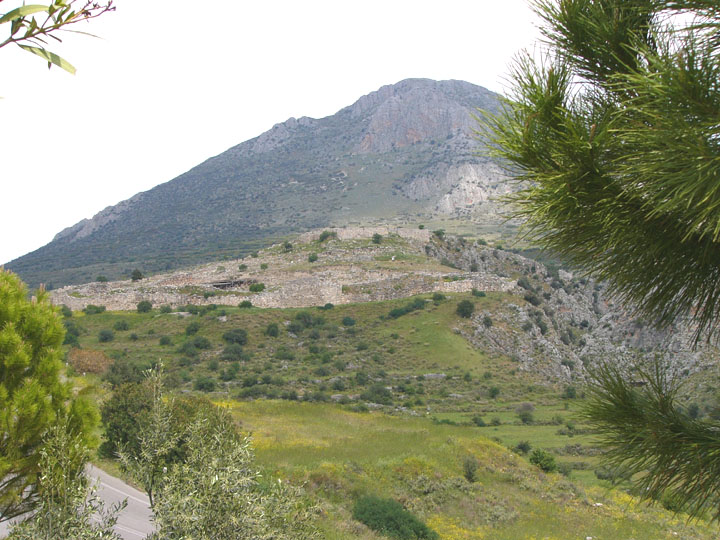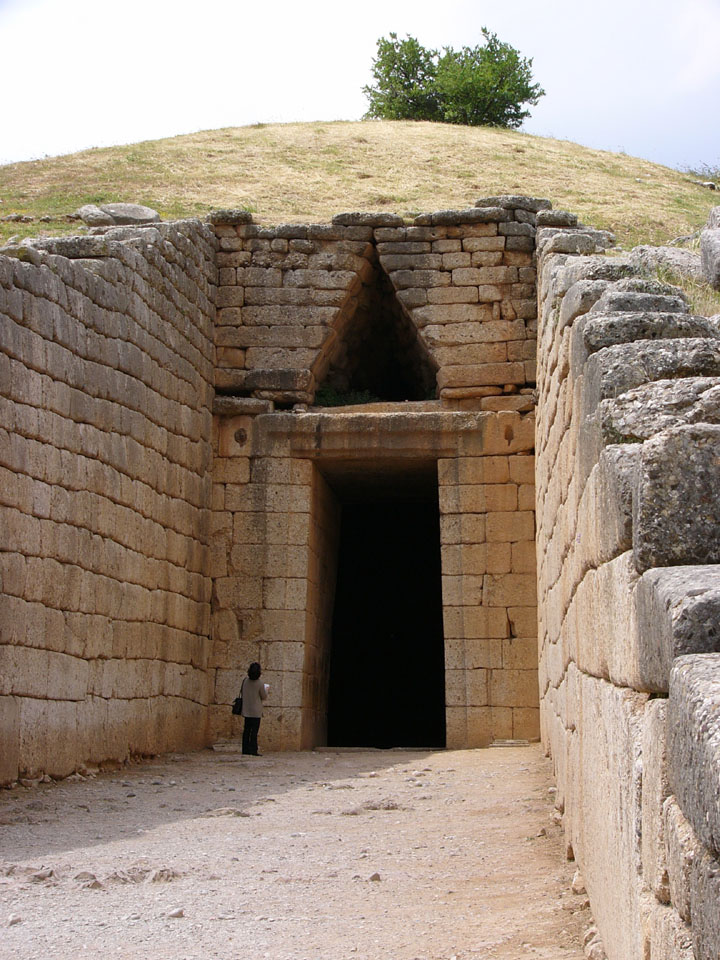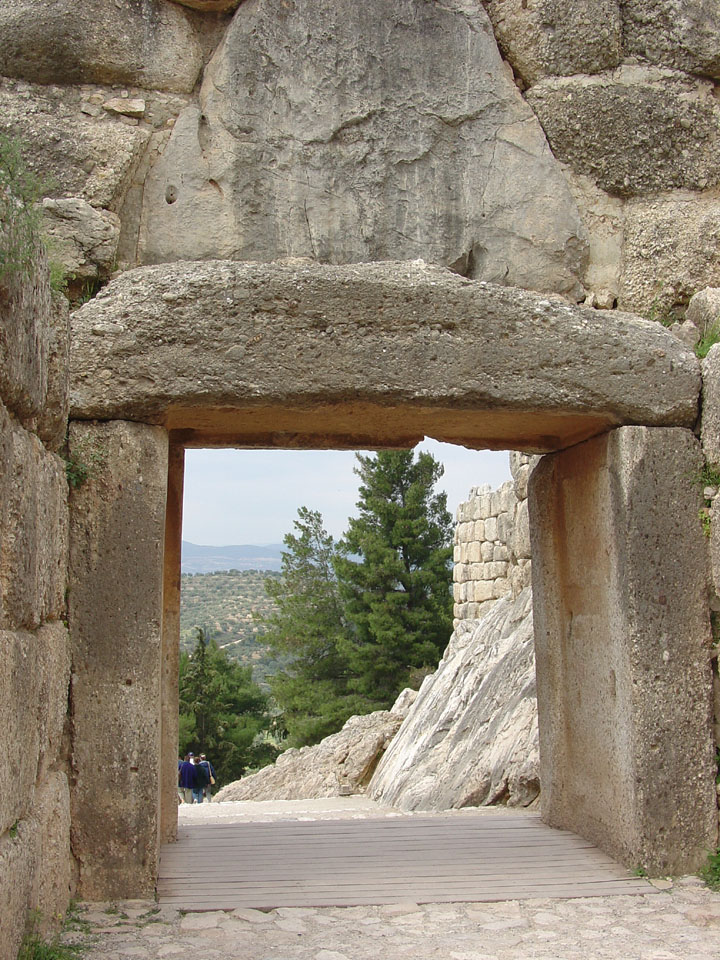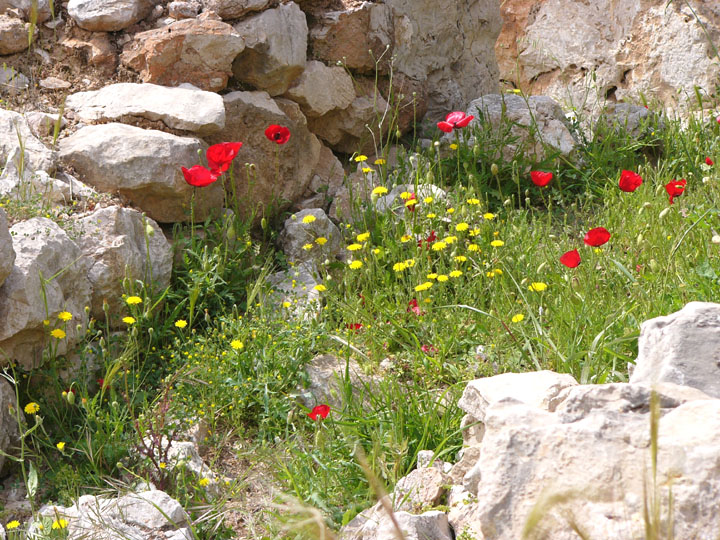

Mycenae 2004

stronghold of Mycenae
More Photos from the stronghold
According to legend, Mycenae was the
capital of Agamemnon, the Achaean king who sacked the city of Troy, and it was
set, as Homer says, “in a nook of Argos,” with a natural citadel formed by the
ravines between the mountains of Hagios Elias (Ayios Ilias) and Zara, and
furnished with a fine perennial spring named Perseia after Perseus, the
legendary founder of Mycenae. It is the chief Late Bronze Age site in mainland
Greece. Systematic excavation of the site began in 1840, but the most celebrated
discoveries there were those of Heinrich Schliemann. The term “Mycenaean”
is often used in reference to the Late Bronze Age of mainland Greece in general
and of the islands except Crete.

entrance to one of the tombs
More Photos of the tombs and the objects taken from them
There was a settlement at Mycenae in the Early Bronze Age, but all structures of
that or of the succeeding Middle Bronze Age have, with insignificant exceptions,
been swept away by later buildings. The existing palace must have been
reconstructed in the 14th century BC. The whole area is studded with tombs that
have yielded many art objects and artifacts.

The Lion Gate at Mycenae, Greece, c. 1250 BC.

Palace side of the Lion gate
From the Lion Gate at the entrance to Mycenae's citadel, a graded road, 12
feet(3.6 m) wide, leads to a ramp supported by a five-terrace wall and thence to
the southwestern entrance of the palace. The latter is composed of two main
blocks, one originally covering the top of the hill but largely destroyed on the
erection of the Hellenistic temple, the other occupying the lower terrace to the
south banked up artificially on its western edge. The two blocks were separated
by two parallel east-west corridors with storerooms opening off them. The
existence of a palace shrine on the upper terrace seems implied by discoveries
of a magnificent ivory group consisting of two goddesses and an infant god with
fragments of painted tripod altars and other objects.
Text from the Encyclopedia Britannica

Spring at Mycenae

flowers in the room called the "Granary"
Link to interactive map of ancient Greece